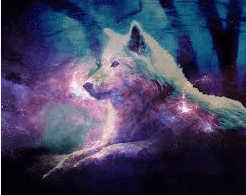Galaxy:Fg38lov-Ebe= Wolf

The Fg38lov-Ebe= Wolf galaxy presents a fascinating case study in astrophysics, characterized by its dynamic star clusters and the pivotal influence of dark matter. This galaxy not only exemplifies the gravitational collapse of primordial gas and dust but also mirrors the intricate social structures observed in terrestrial wolves. Understanding its formation and evolution could provide profound insights into the lifecycle of galaxies. However, the complexities surrounding its dark matter interactions raise critical questions about the very nature of galactic stability and evolution. What implications might these findings have for our comprehension of the universe?
Unique Characteristics of Fg38lov-Ebe= Wolf
The Fg38lov-Ebe= Wolf exhibits a distinct set of morphological and behavioral adaptations that uniquely position it within its ecological niche, often characterized by its elongated limbs and advanced social structures.
Its habitat preferences include diverse terrains, enabling optimal ambush strategies.
Employing sophisticated hunting techniques, such as pack coordination and strategic pursuit, this species maximizes its foraging efficiency, ensuring survival in competitive environments.
Read more: Galaxy:Aotbpbf1nps= Stich
Star Clusters and Formation
Star clusters, formed through the gravitational collapse of gas and dust in molecular clouds, play a pivotal role in understanding the processes of stellar formation and evolution within galaxies like those inhabited by the Fg38lov-Ebe= Wolf.
These stellar nurseries facilitate cluster dynamics, influencing the interactions and fates of individual stars, thereby providing critical insights into the lifecycle of galaxies and their stellar populations.
The Role of Dark Matter
Significant evidence suggests that dark matter constitutes a substantial portion of the total mass within galaxies, profoundly influencing their structure, dynamics, and evolution.
Its gravitational effects are essential for maintaining the integrity of cosmic structures, affecting the rotation curves of galaxies and the formation of large-scale structures in the universe.
Understanding dark matter is crucial for comprehending the universe’s fundamental nature and its expansive evolution
.Read more: Free Country Music Radio
Conclusion
In the cosmic theater, Fg38lov-Ebe= Wolf stands as a testament to the intricate dance of creation and destruction.
Star clusters emerge as vibrant performers, each contributing to the galaxy’s evolving narrative, while dark matter weaves an unseen tapestry that binds them into a coherent form.
Together, these elements illustrate the delicate balance of forces that govern galactic evolution, echoing the complexities of life itself, where unseen influences shape destinies and foster the emergence of dynamic communities.




